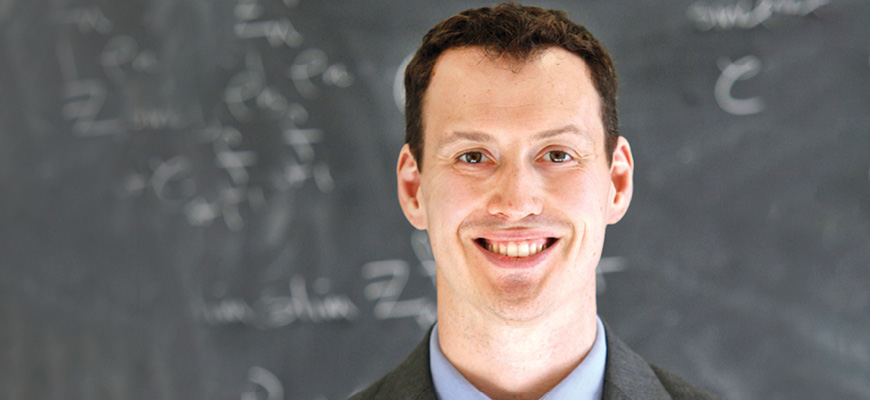
The square root of mathematical learning
Math professor’s methods improve student outcomes in gateway calculus course
Posted on: October 26, 2022; Updated on: October 26, 2022
By Rebekah Friedman, Rebekahb@mailbox.sc.edu, 803-576-7270
As the sort of kid who had a knack for math, Matthew Ballard grew up thinking that was just the way his brain was wired, a widely accepted misperception within American culture.
“The population is divided into two camps: those who think they’re good at math and those who think they’re not,” he says. “When you think that way, where you land is almost wholly out of your control, simultaneously absolving you and stripping you of any sense of achievement.”
Ballard’s sense of his own mathematical prowess changed during his mathematics Ph.D. program. The work became significantly more difficult as he dove deeper into his research, and he began to wonder how it must feel for people who don’t identify as being good at math — especially college freshmen who need to pass calculus to advance in their majors.
Now a mathematics professor in the College of Arts and Sciences, he’s developed a teaching style that promotes effort over innate abilities. His goal is to usher more students through the funnel of introductory STEM classes.
“What I want to try and emphasize in my class is the fact that it's just like any other human aspect,” he says. “You can get better at math if you apply yourself in the right direction with the right guidance.”
And students have gotten better — not only in his own classroom but in others as well. As the mathematics department’s Calculus I coordinator, he’s made changes that have cut the course’s drop/fail/withdraw rate in half.
I think the more people you can reach, with at least mathematics education for sure, but education in general, the better the world is overall.
Matthew Ballard
Now, students at risk of failing Calculus I can receive extra instruction throughout the semester by taking a new co-requisite course Ballard added to the academic bulletin. He’s also implemented standardized exams to ensure students in each section have mastered the fundamentals. Students are allowed to take automated practice tests as many times as they want, which lets them figure out where they need help without putting their grade at risk.
“If they have the chance to fail and then the opportunity to improve, to remedy that failure, without any cost to themselves other than the time it takes to learn, then they develop a great deal more confidence coming out of that class,” he says. “They have the sense of resilience, and they have much less fear of math in general.”
Calculus isn’t the only area where Ballard has found innovative ways to support student success. In his Linear Algebra class, he’s addressing a problem that affects the entire mathematics discipline: inaccessible course content. PDFs are a standard in digital communication, but they are notoriously incompatible with screen readers, software applications that help blind and visually impaired users read the digital content they can’t see. Throwing the vast alphabet of mathematical symbols into the mix amplifies the issue.
To change this, Ballard developed a new workflow for creating notes and other course materials in a format that works for screen readers. The end result: a textbook’s worth of accessible content for Linear Algebra and a process that’s become a template for others in his department looking to do the same.
“I think the more people you can reach, with at least mathematics education for sure, but education in general, the better the world is overall,” he says. “You don't want to exclude people just because they have a certain challenge that keeps them away from all this richness.”
Ballard hopes to further encourage student growth by incorporating new technology into his curriculum. Since fall 2020, he’s been experimenting with the Lean interactive theorem prover in his Transition to Advance Mathematics class. This software can check whether a student’s work is correct with more precision and speed than a teacher.
“That is something that can give a student instantaneous feedback in terms of how the argument is structured, how well they're understanding the concept and how well they're moving forward,” he says. “Incorporating this type of technology in education has the potential to really revolutionize how we teach students mathematics at all levels.”